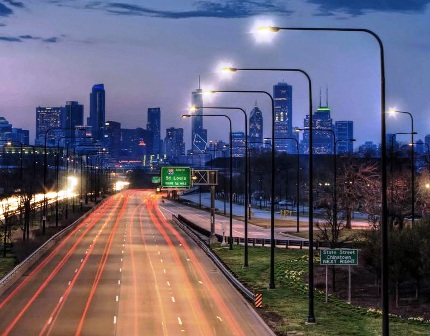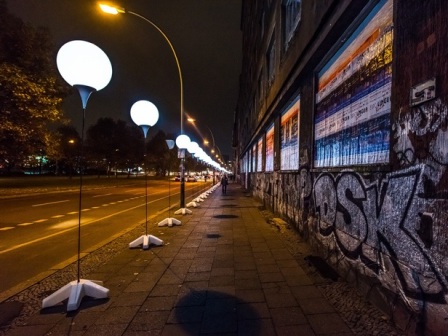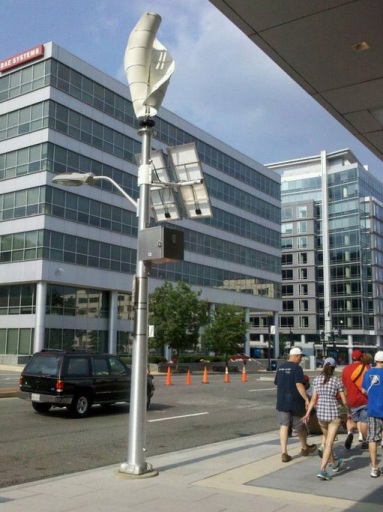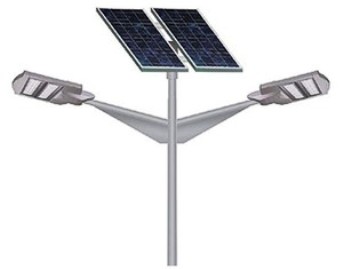Intelligent street lighting systems
Everyone has long been accustomed to artificial lighting on the streets and takes it for granted. Lamps placed on various poles illuminate highways, roads, highways, yards, playgrounds and other territories and objects. They are turned on automatically or manually, at a certain time of the day according to the schedule or at the discretion of the dispatcher.
In different places, depending on the characteristics of the illuminated object, lanterns with reflectors, diffuse lanterns or lanterns with shades of different shapes are used. In this way, major roads are lit with reflector lamps, secondary roads can also be lit with diffused lamps with diffused shades, and parks and footpaths are often illuminated with a soft light emitted by spherical or cylindrical shades.
SNiP 23-05-95 «Natural and artificial lighting» regulates the operation of street lighting, and the changes made to this standard in 2011 now imply the widespread introduction of LED technology.The regulation concerns, among other things, ensuring the safety of road and pedestrian traffic, in connection with which the values of the lamp power and the level of illumination are determined for objects with different purposes.
Road safety comes first, and here it is important to take into account both the speed of movement and the features of the terrain, as well as the presence of elements of the transport infrastructure: bridges, intersections, intersections, etc.
Visibility for the driver must be such that it does not contribute to early fatigue. Horizontal lighting on roads and streets is extremely important, which is defined in the document by the category of illumination and traffic intensity.

The following types of lamps are traditionally used for street lighting: incandescent lamps, high-pressure mercury arc lamps, arc metal halide lampsas well as high and low pressure sodium lamps. In recent years, LED lamps have been added to this range.
As for LED lamps, their lighting properties and technical characteristics are ahead of other types of lamps traditionally used for street lighting. LEDs are very economical, they consume a minimum of electricity, they can directly, with almost 90% efficiency, convert electric current into light.
For the sake of fairness, we note that at significant powers, LEDs today are inferior in terms of efficiency to some types of traditional lamps. But according to experts' predictions, in the coming years LED technology will reach such a degree of perfection that it will completely replace gas-discharge lamps in the field of street lighting.
This is basically all that can be said about conventional street lighting systems. However, let's mention some disadvantages. First of all, it is uneconomical. Electricity is consumed regardless of reality, and the conventional street lighting system is not flexible. The second negative quality is the need for maintenance costs and the impossibility of continuous operation, as a result of which the need to sacrifice safety for a while in case of malfunctions.

These disadvantages are devoid of intelligent street lighting systems. An intelligent street lighting system is no longer just lanterns with lamps. The system includes both a set of street lamps and a network for exchanging information with a local center (concentrator), transmitting it to a server for further processing of the received data.
Two-way communication is assumed here, which allows you to remotely adjust the brightness of the headlights, depending on the weather conditions and the nature of the traffic at the moment. For example, with fog, brightness should be added, and with a bright moon, it should be reduced. Thus, energy savings are achieved at least 2 times compared to conventional street lighting systems.
Maintenance of intelligent street lighting systems is faster and more cost-effective. Continuous monitoring of the status of the lamps from the center allows you to immediately react to a malfunction and quickly eliminate it. It is no longer necessary for crews to regularly go around the controlled area to find out if a lamp is out of order, it is enough to go to a previously known lamp and simply fix it.
The key element of the intelligent system is the lamp post itself, which contains several main blocks: a lamp driver, a communication module, a set of sensors. Thanks to the driver, the lamp is powered by stabilized voltage and direct current. Digital control and data transmission is carried out by the communication interface module. Sensors monitor the weather, the position of the column in space, the degree of transparency of the air. Thus, the efficiency of lighting management in cities and highways goes to a qualitatively new level.
The level of illumination of objects in a certain area is monitored in real time thanks to a local concentrator that precisely controls the brightness, the direction of the light and even its color. Depending on weather conditions, the intensity of traffic, the presence of precipitation, the level of artificial lighting can be changed automatically.
Amplification of light or vice versa — dimming — this process can be controlled by intelligent electronics. Timely dimming, by the way, has a beneficial effect on the life expectancy of LED lamps and helps to save energy without harming others.

In some countries even today you can find intelligent systems with autonomous power supply, when each pole has a separate solar battery or wind turbine.
The energy of the wind or the sun (during the day) is constantly accumulated in the battery, but is consumed by the lamp as needed, taking into account the external conditions, in a suitable mode. The advantages of such solutions are obvious. Lanterns practically do not require maintenance, they are autonomous, economical and safe.Unless you need to periodically wipe the lampshades of dust and dirt, especially on highways.
A remote server or zone controller automatically controls the smart street lighting system. Initially, settings and a control algorithm are set, in accordance with which signals are then generated for remote switching on, off and adjusting the brightness of the lanterns. The signals are fed to the signal inputs of the drivers.
This achieves energy savings, longer lamp life and an economical lighting system as a whole. For signal transmission, RS-485, radio channel, Ethernet, GSM, twisted pair or even power lines are used as the conductor for the HF signal.

Using servers allows you to address a certain lamp, turn it on or off by sending the corresponding signal to its control unit. In particular, if a radio frequency channel is used, then the beacon is assigned an IP address using the TCP / IP protocol.
Each beacon, or rather beacon control unit, is initially assigned one of the many thousands of available IP addresses, and the operator sees each beacon with its address and current status on a computer monitor map.
Among the server's features are regular polls of lanterns, and a lantern with a specific factory address is simply tied to a place on the territory. GSM control is used in exceptional cases due to its high cost.
Smart street lighting systems have three levels of control for individual lamps, and although control methods differ from one designer to another, the principle remains the same. For example, DotVision (France) offers the following control options:
-
Individual;
-
Zonal with power regulation;
-
Zonal with regulation and telemetry.
With individual control, maximum savings are ensured, as well as high accuracy of service for the comfort and safety of people. Each lamp is individually controlled and regulated with intelligent ballasts, transceivers and controllers.
Zone control with remote power regulation is a compromise in terms of balancing economics and capabilities. A power regulator and telemetry system based on LonWorks or Modbus is installed in the zone control cabinet, which allows two-way communication between the zone controller and the zone server.
In zone control with telemetry, the economy is small, but the zone controller clearly monitors faults, conducts telemetry and remotely controls the lamps (on and off). Two-way data exchange is available between the server and the controller for transmission of telemetry information and control signals.
Of course, in addition to light sensors, which are responsible for turning on the lights in the evening and turning off the lights in the morning, there are other methods of automated control. For example, Stwol (Korea) provides the ability to control lighting directly in accordance with the current level of illumination. But not with the help of a photo sensor, but with the help of GPS.
The geographic coordinates are associated with the time of sunrise and sunset, — the program does the calculations — and at a certain astronomical time, the device already knows that it will be dark in 15 minutes and turns on the lights in advance. Or 10 minutes after sunrise, orienting himself in the same way, he extinguishes the lanterns.A simpler method is to turn the lights on and off on a schedule, at a certain time of day, depending on the day of the week.
